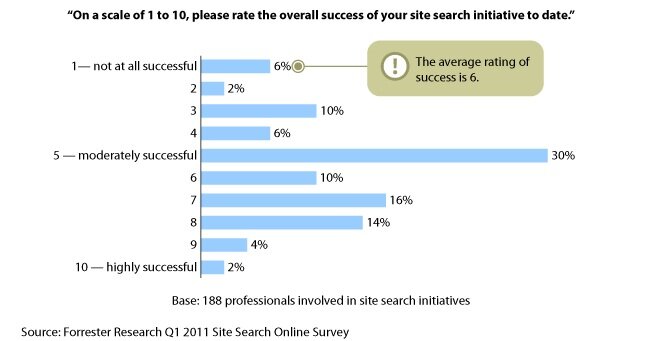Webinar preview: Optimizing on-site search
July 24, 2012 1 Comment
For the third installment in our optimization series, after analytics and content, we’re taking a deep dive into on-site search. The topic may seem a bit staid; after all, site search is the workhorse of eCommerce site features, so commonplace it doesn’t grab headlines or generate hype. But on-site search does have the potential to drive serious revenue, especially during the upcoming holiday season.
Consumers increasingly expect speed and relevance when they shop online. Fully 73% of shoppers will exit a site if they don’t locate what they seek within two minutes, according to search specialists SLI Systems. Site search can meet and exceed this high standard, delivering a tailored results set that allows shoppers to sort through products according to their priorities.
Moreover, site search can act as a vital link to a brand’s product offering as shoppers roam across channels and devices. Industry researcher Forrester estimates that 36% of all purchases – not just eCommerce site purchases – are now influenced by online activity, whether through eCommerce orders, in-store purchases influenced by Web research, mobile shopping activity, or social networks. A robust search toolset can deliver relevant information tailored to the touchpoint.
Survey data from industry researcher Forrester indicates that merchants are aware of this potential gold mine – and their need for improvement. The majority of businesses reported their on-site search initiatives were only moderately successful, with just 1 in 5 rating their efforts 8 or higher on a 10-point scale.

The Forrester survey found that the top area businesses identified for improvement with on-site search was improving relevance – connecting shoppers more efficiently to the products that meet their needs. Tomorrow’s Webinar will provide merchants with essential strategies for optimizing on-site search across touchpoints, including:
- How to decide whether faceted search is a fit. It’s now commonplace for Web users to parse through extensive search results sets with a few clicks of the mouse, selecting for those attributes that matter to them. This type of dynamic search results display – called “faceted search” – enables shoppers to define their personal path to purchase by filtering the results and in essence creating a personalized, targeted category custom-built for their needs. Implementing such a tool to make it as powerful as possible requires an investment in time and resources – but given the potential revenue gains, every merchant should consider whether faceted search is a fit for their business.
- Best practices for mobile site search. Tailoring search functionality for mobile users is now a merchant must. Not only does industry researcher Forrester predict shoppers will transact purchases worth $10 billion via mobile devices this year, but mobile is becoming an essential research tool for shoppers who go on to buy either at physical locations or via the eCommerce Web site. During last year’s peak holiday season, for example, more than one in 10 shoppers used a mobile device to visit a merchant’s Web site on Cyber Monday, compared to 3.9% of shoppers in 2010 — a more than 175% increase – and the numbers are only expected to climb this year.
Register for the Webinar now and tune in tomorrow at 10 a.m. Pacific to hear about these topics and more. Meantime, what on-site search strategies have worked for your business?
 One key area of weakness continues to be social networking. The percentage of shoppers linking to eCommerce sites from social networks has stayed nearly flat from a year ago – rising to 1.04% this year compared with 1.00% in Q2 of 2011. Moreover, retailers and brand manufacturers are flagging in their efforts to drive social traffic, while catalogers – the weakest segment in this regard – are improving, but can still only attribute less than a percent of their visits to social networks. The stagnant performance suggests merchants must continue to find new ways to engage this audience, which is a potential source of not only lucrative sales but also powerful word-of-mouth clout during the holidays.
One key area of weakness continues to be social networking. The percentage of shoppers linking to eCommerce sites from social networks has stayed nearly flat from a year ago – rising to 1.04% this year compared with 1.00% in Q2 of 2011. Moreover, retailers and brand manufacturers are flagging in their efforts to drive social traffic, while catalogers – the weakest segment in this regard – are improving, but can still only attribute less than a percent of their visits to social networks. The stagnant performance suggests merchants must continue to find new ways to engage this audience, which is a potential source of not only lucrative sales but also powerful word-of-mouth clout during the holidays.




Connect with us: